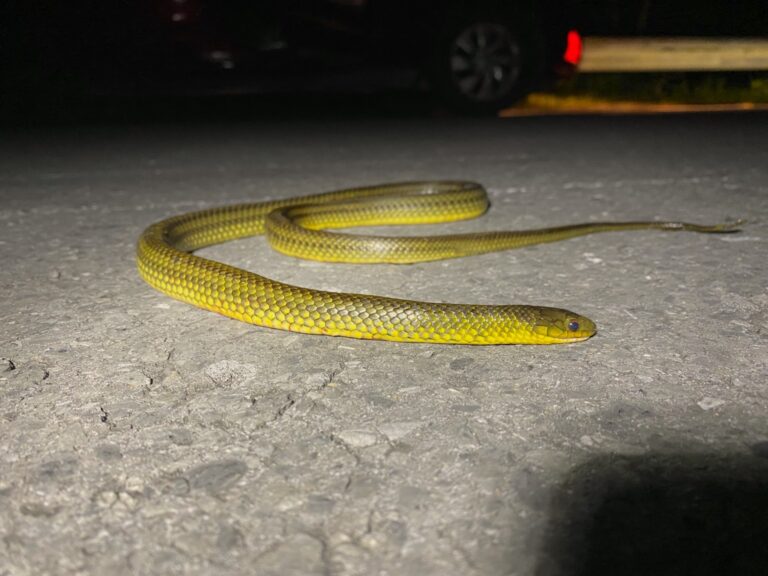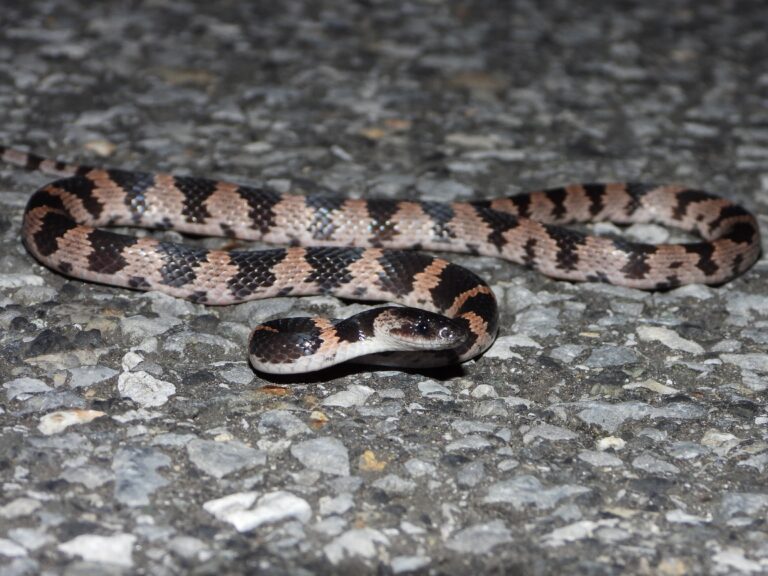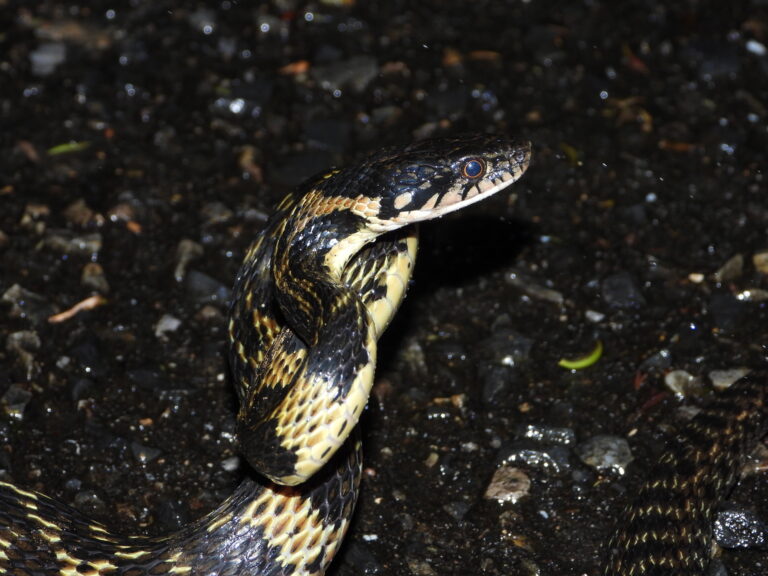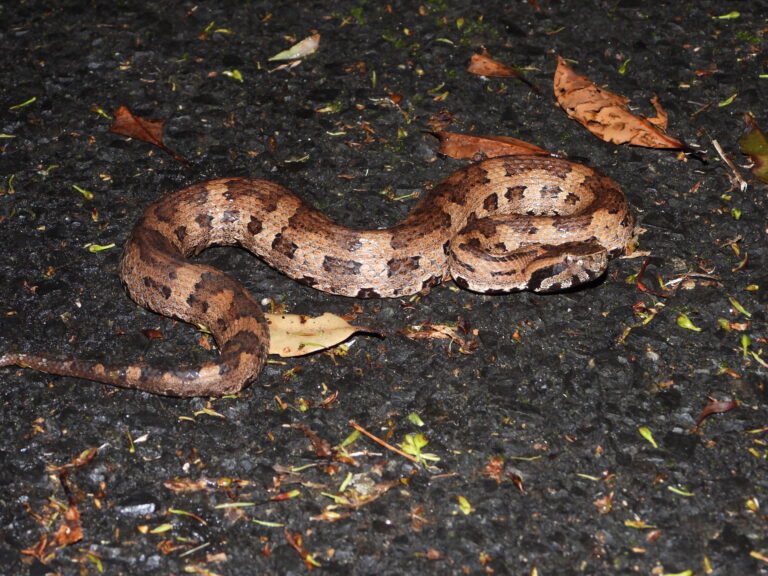Sakishima Wolf Snake (Lycodon rufozonatus walli) – Wildlife of Japan
Introduction
The Sakishima Wolf Snake (Lycodon rufozonatus walli), also known as the Red-banded Snake, is a nonvenomous colubrid found only in Okinawa’s Sakishima Islands in southern Japan.
It belongs to the Lycodon rufozonatus complex distributed across East Asia, and some recent studies suggest that the Sakishima population may deserve full species status (Lycodon walli).
This species is sometimes mistaken online for the venomous Banded Krait (Bungarus fasciatus), but it is entirely harmless.
Its elegant dark bands and subtle island-to-island variations make it one of Okinawa’s most distinctive snakes.
Appearance
Adults measure 50–100 cm in total length, occasionally exceeding 120 cm.
They have a slender, muscular body with a yellow-brown ground color overlaid by bold black or dark-brown crossbands from head to tail.
The pattern varies by island—some snakes show narrow, clear bands, while others have broader, faded ones.
The head is slightly flattened, eyes are small with vertical pupils, and the smooth glossy scales give a polished appearance.
Though its markings resemble the venomous Sakishima Habu, this species is nonvenomous and poses no threat to humans.
Habitat & Distribution
This snake inhabits the Yaeyama and Miyako archipelagos in southern Japan.
It lives in subtropical forests, grasslands, and farmland, and can even be found near human settlements.
Nocturnal and ground-dwelling, it is most active on warm, humid nights. Road mortality is a significant local threat, as individuals often cross roads after rain.
On Ishigaki and Iriomote Islands it is relatively common, but the Miyako population is small and localized.
Behavior
During the day, it hides beneath logs, rocks, or leaf litter.
When threatened, it seldom bites, instead releasing a strong-smelling musk from the cloacal glands.
It moves smoothly and silently and may climb low vegetation or walls at night.
Its cryptic coloration and calm movement make it difficult to notice even where common.
Diet
The Sakishima Wolf Snake preys on small reptiles and amphibians such as frogs and skinks.
It occasionally feeds on other snakes or carrion—rare behavior among snakes.
On remote islets like Nakano-kami Island, it may consume seabirds or their eggs, showing remarkable adaptability to island ecosystems.
Conservation
Nationally, the species is not listed as endangered in Japan.
However, the Miyako population is designated a “Local Population at Risk (LP)” in the Okinawa Red Data Book due to habitat loss and roadkill.
Urban development and tourism infrastructure threaten its habitats, while invasive species such as the cane toad (Rhinella marina) may disrupt local food webs.
Protecting forest corridors and educating residents that this snake is harmless are key for its long-term conservation.
Author’s Impression
I encountered the Sakishima Wolf Snake on Ishigaki Island.
It appeared quietly on a forest road near a stream, gliding over the damp ground under my flashlight.
If you wish to find this species, search near water—streams, puddles, or moist forest paths after rain are ideal.
The snake moves gently through the subtropical night, a graceful reminder of Okinawa’s hidden natural world.








